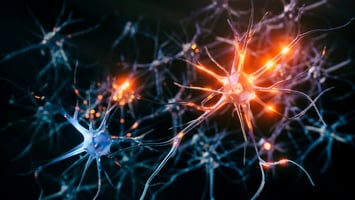CBT, Some Meds Found Effective for Anxiety in Kids, but Many Remain Symptomatic
 |
The meta-analysis involving more than 7,000 patients highlighted how different treatments fared on different measures and compared with other treatments.
Zhen Wang, Ph.D., and colleagues at the Mayo Clinic searched six large medical databases for studies comparing CBT, pharmacotherapy, or a combination to treat children and adolescents for a range of anxiety disorders.
A total of 115 studies with 7,719 patients with diagnoses of separation anxiety disorder, generalized anxiety disorder, social anxiety disorder, specific phobia, or panic disorder were included in the analyses. The medication trials included SSRIs (sertraline, fluoxetine, fluvoxamine, or paroxetine), SNRIs (atomoxetine, duloxetine, or venlafaxine), tricyclic antidepressants (clomipramine or imipramine), and benzodiazepine (clonazepam).
These were among the major findings:
- SSRIs significantly reduced primary anxiety symptoms and increased remission and response.
- SNRIs significantly reduced clinician-reported primary anxiety symptoms.
- Benzodiazepines and tricyclics were not found to significantly reduce anxiety symptoms.
- When CBT was compared with wait-listing/no treatment, CBT significantly improved primary anxiety symptoms, remission, and response.
- CBT reduced primary anxiety symptoms more than fluoxetine and improved remission more than sertraline.
- The combination of sertraline and CBT significantly reduced clinician-reported primary anxiety symptoms and response more than either treatment alone.
In an accompanying editorial, Joan Rosenbaum Asarnow, Ph.D., of the Semel Institute of Neuroscience and Behavior at UCLA, said the meta-analysis by Wang and colleagues demonstrates that there are acute treatments that work.
“Still, roughly 40% to 50% of anxious children who receive gold-standard CBT or an SSRI remain symptomatic following acute treatment,” they wrote. “While this is comparable with effects for treatments of pediatric medical conditions, such as asthma, this means that full remission is not expected for many children, even with our best treatments. Additional research and practice advances are needed to clarify how best to address this prevalent and impairing illness. The hope is that at the next review, treatments with stronger, more pervasive, and lasting benefits will be identified, with strategies for integrating these treatments within service delivery systems tested and ready to be implemented to improve behavioral health in our children.”
For related information, see the Psychiatric News article “CBT for Child Anxiety May Confer Long-term Protection from Suicidality.”
(Image: iStock/izusek)





